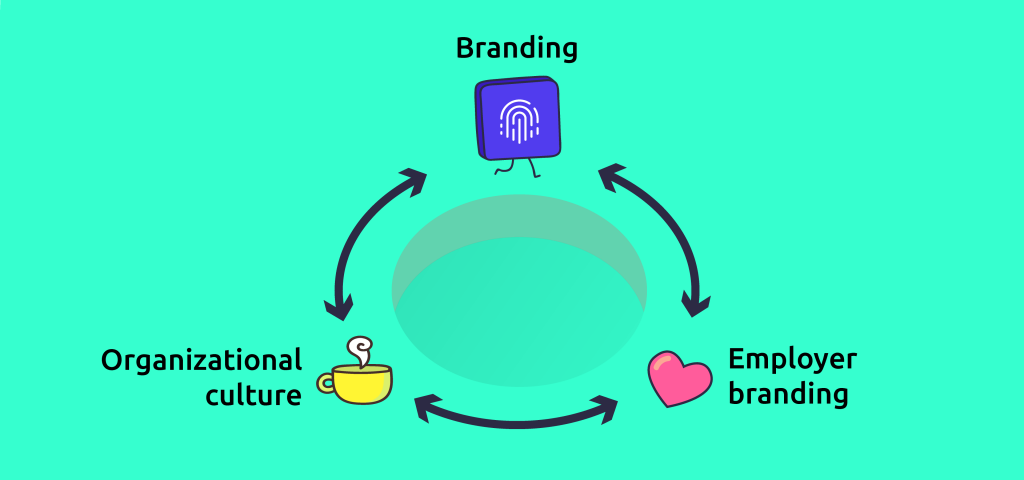Glass box brands: how your organizational culture became your employer branding
Estimated reading time: 6 minutes
They say a little transparency goes a long way: the proven benefits of workplace transparency are numerous. However, we’ve moved into a digital age where a little transparency no longer exists. More and more, we see internal communications and company culture are made public by employees. A growing number of (millennial and Gen Z) employees is used to documenting their lives online – including their working lives. This makes your organizational culture now part of your employer branding, and so a compelling and attractive culture has become ever more important. So let’s focus on communicating your culture and branding to make customers like what they see!
Black box vs. glass box
In 2017, trend firm TrendWatching described a shift in the very nature of what it means to be a brand. Organizations used to be black boxes, which means that it was not easy for outsiders to see what was going on inside an organization. Whatever you chose to show the outside world, that was your brand.
Nowadays, the connected world we live in has driven radical transparency, turning organizations into glass boxes. Outsiders can see inside easily. And they can see everything that is inside: values, people, processes, feelings. So now that a business is a glass box, your brand is everything that’s visible – every value, every person, every process. And with employees constantly documenting their lives online, you can sometimes literally see inside an office or workspace, as they share photos or videos of impromptu events that happen during their working days. This also means you lose part of control over your internal and external communications.

Because your organizational culture is now customer-facing, it’s an important part of your brand. All of that wouldn’t matter if consumers don’t care about what they could see inside your glass box. But increasingly, they do. We’re seeing a shift towards consumers using brands to communicate internal values externally. And so, they will have a feeling about your culture, your values, and your processes.
Additionally, consumption choices are increasingly more ethical, sustainable, and more meaningful. It’s why some brands are already letting their organizational culture and socially responsible positions shine through: customers want to see that their values are shared by the companies they consume from. This combination drives the desire for transparency, which is something organizations cannot afford to ignore.
Shift in focus
Let’s take a step back. In the first installment of our Employer Branding blogs, we defined the topic:
An employer brand involves the business marketplace’s perception of your company as an employer. It also reflects what you offer employees in return for their talents, skills, and experience. Simply said: how you market your organization as an employer for which job seekers and current employees want to work.
We also mentioned that your employer brand might not be perceived as equally important as the broader definition of ‘brand’, but with this shift in business brands’ nature, there must be a shift in focus. Because your organizational culture has partly become your employer branding. And your employer branding is part of your brand. Now organizations have shifted from being black boxes to glass boxes, the three are inextricably intertwined.

So, what actions to take now? Attention must go to internal communication. Are you giving your employees the ammunition they need to tell a positive story to outsiders to help show a compelling brand story and employer branding? Is your culture a culture of transparency, one that you’re not afraid to show?
We suggest focusing on these three steps to equip your employees with the information they need to shine a positive light on your organization:
1. Evaluate your current organizational culture
Evaluate your current culture through polls, pulse surveys, employee interviews, customer ratings, etcetera. Assess whether your company values and mission have been communicated and how well they have been pursued.
2. Develop a plan
By assessing your culture, you will spotlight any gaps or weaknesses. Developing a plan to summarize and crystallize what your organization stands for helps you to see where these gaps can be filled, and weaknesses can be strengthened. In addition, it will show you what things are important to communicate to your staff, such as business data. This will help you truly create a culture of transparency.
Our customer Hoenderdaal Fasteners proves they have found the transparency that was lacking before through internal communication. Tristan Hoogmoed, IT support employee at Hoenderdaal Fasteners, explains how they do this by displaying Power BI data on their digital signage screens: ‘Power BI gives us far more insight into our business processes. In addition, it makes data visually appealing, making our employees more inclined to actually have a look at important figures and statistics. Using digital signage, the departments now have a good idea of how they and the company perform just by looking at the screens. This kind of transparency was exactly what was lacking before.’

3. Empower your employees
Empower all your employees and departments to tell your story. A compelling culture will make others want to work with (and for) you. If your glass box brand makes your walls see-through and puts your culture and processes out in the open, you may as well make sure your employees have positive things to tell!
Our customer Barenbrug, a family business to the core, shares exactly what their organization stands for through internal communication, giving their employees a reason to be proud of their organization. Mirella van de Sant, Global Marketing Director at Barenbrug, explains with pride: ‘I see wonderful things happen throughout our company. We share them with all our colleagues through our global channel in our corporate app. A great example is the ‘Helping with Hands’ foundation, founded by the Barenbrug family. With this foundation, every employee can choose one day a year to do volunteer work in a project of choice; to ‘help with their hands’, hence the name ‘Helping with Hands’. We always share these projects. It’s the ultimate illustration of the Barenbrug family feeling!’
Are you ready to make a meaningful and positive change to your organizational culture and employer branding? Get in touch with our consultants to see how strong internal communication can help your organization! Or download the free infographic with 10 ways to strengthen your employer brand.

